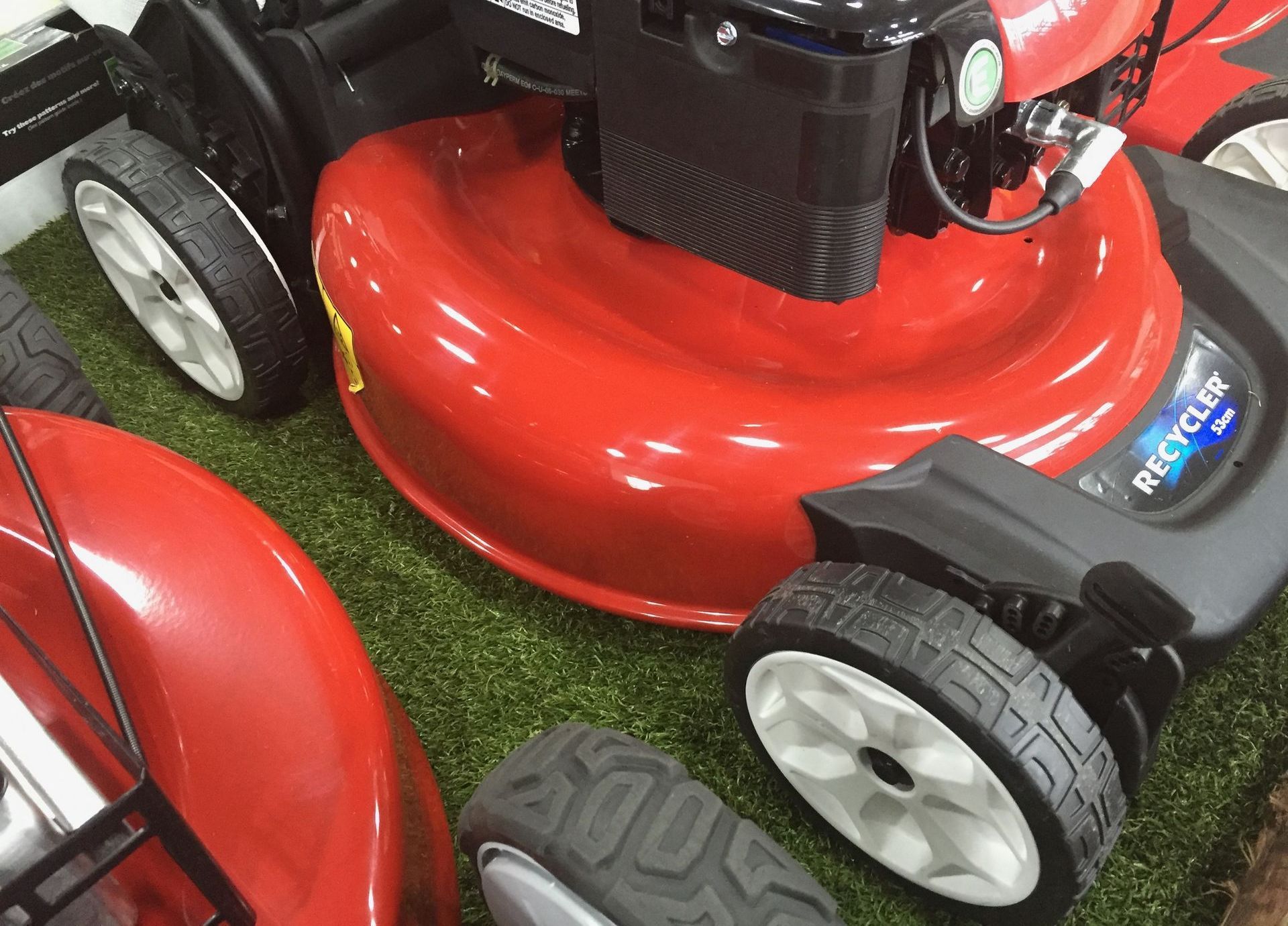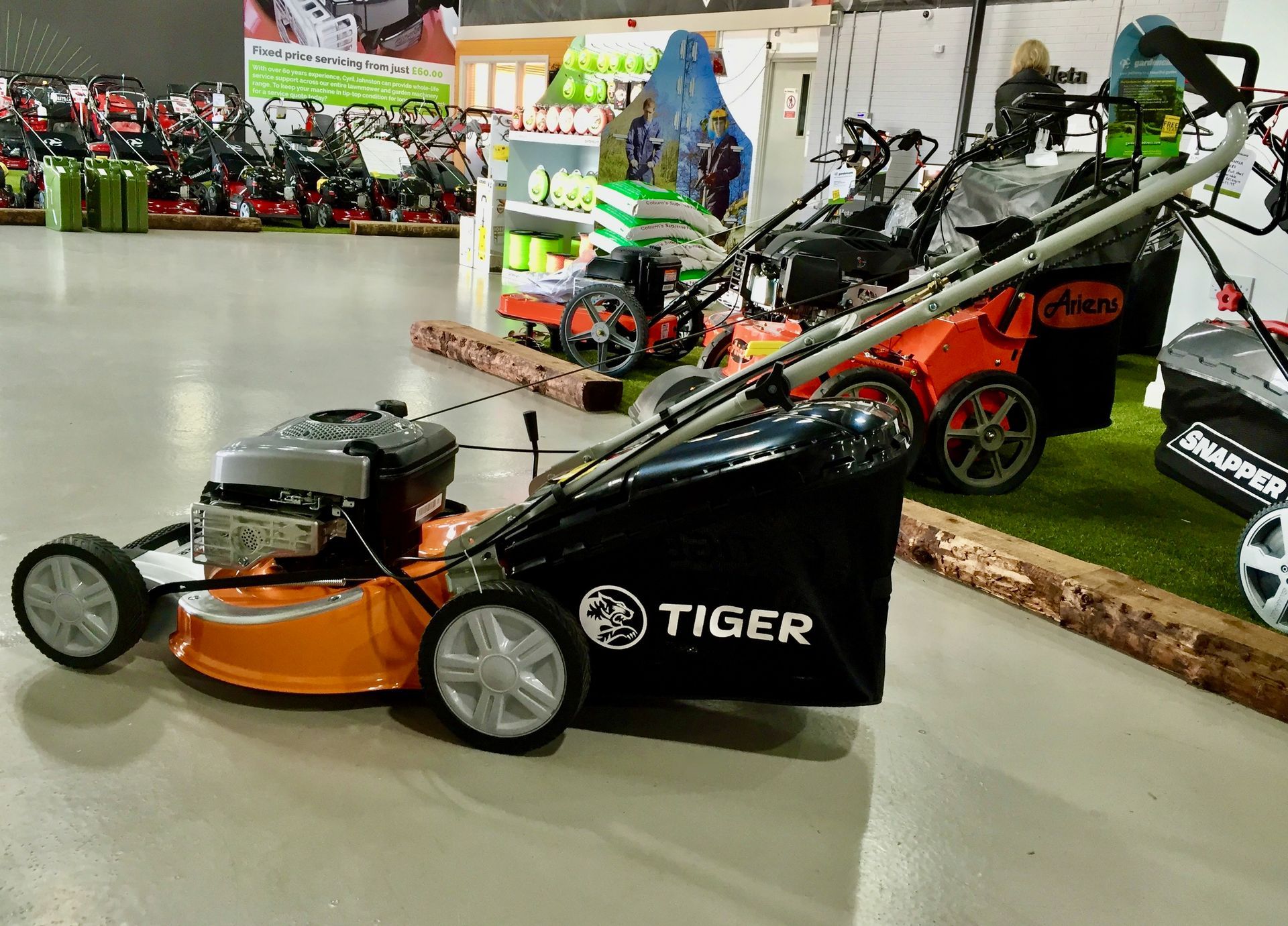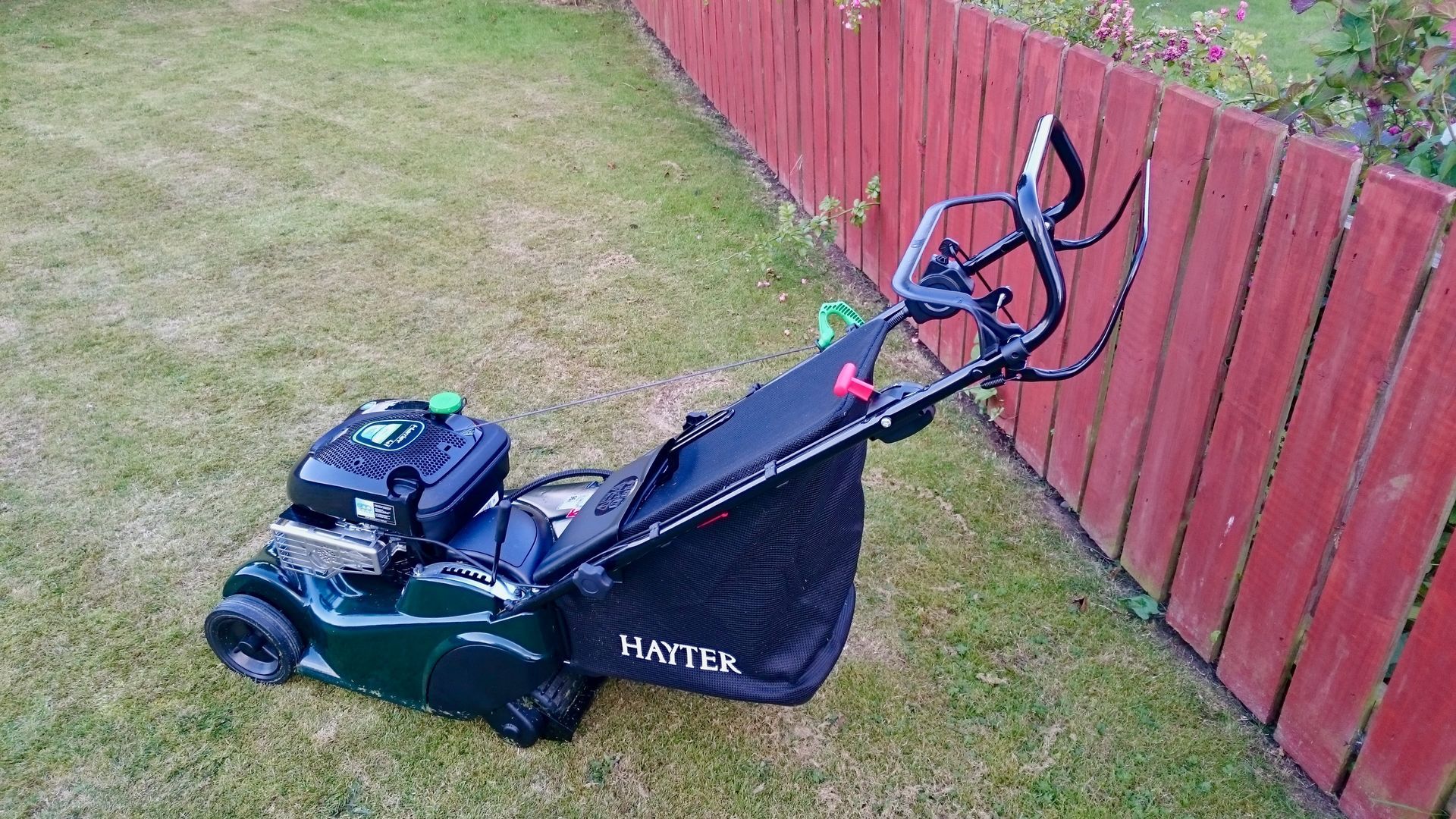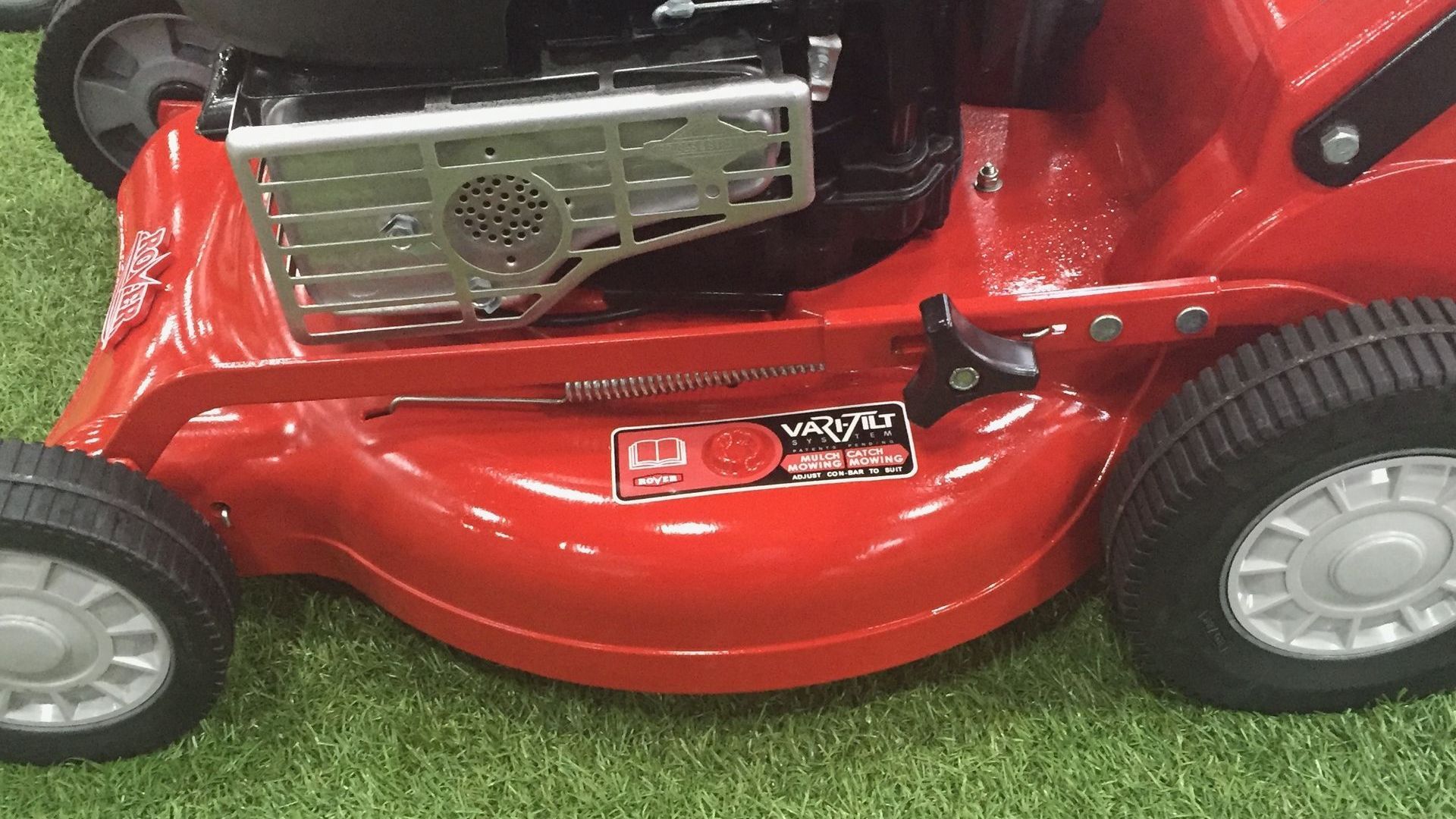*Important Information: As an audience supported website, if you purchase an item after clicking an external link or advertisement marked with an asterisk (*) on this website, we may receive a commission. This does not change the price you pay.
Plastic and composite decks can today be found on both consumer and professional grade mowers. Image Credit: Africa Pink
Cutting Decks
Over the years, cutting decks have been made from a wide range of materials.
Today, polymer, steel, composite, and aluminium / alloy decks are the most popular. Hybrid decks are also available, which combine two or more of the aforementioned materials, dependent on model and application.
Plastic and composite decks can today be found on both consumer and professional grade mowers. Image Credit: Africa Pink
Plastic Cutting Decks
Plastic cutting decks — commonly also referred to as poly decks, polymer decks, or less accurately, PVC decks — can be found on more lawnmower types in the UK, than any other. Their popularity is no accident; plastic decks combine advanced materials engineering with practical performance advantages, especially in everyday use. Today, plastic decks are injection moulded from a range of high-performance polymers such as:
- Acrylonitrile Butadiene Styrene (ABS);
- Polypropylene (PP);
- Polyethylene (PE).
These materials are specifically chosen by manufacturers, for their excellent impact strength and resistance to corrosion. UV stabilisers are also added during the manufacturing process, to protect from the potentially damaging effects of sunlight.
From Entry-Level To Premium: Plastic Decks Across the Range
At one time, plastic decks were primarily found on smaller, entry level, electric and petrol mowers. However, they're now found on a wide range of machines — including larger, high-performance, petrol and li-ion battery electric models. Advances in polymer science and moulding technology allow manufacturers to produce structurally robust plastic decks, that rival, and in some cases exceed, the durability of their steel and aluminium counterparts.
Advantages Of A Plastic Cutting Deck
- Corrosion resistance: Plastic decks will not rot, rust, or corrode;
- Lightweight and easily handled: Plastic decks usually weigh less than steel and aluminium alternatives, reducing overall machine weight to improve handling characteristics — especially useful qualities for anyone navigating tight corners, or lifting / carrying a machine off the lawn;
- Excellent impact resistance properties: These decks are engineered to withstand knocks, bumps, and to minimise vibrations — making them ideal for day-to-day domestic use;
- No paint, no coatings, no chipping: There's no paint or coatings to chip, peel, or flake — helping maintain the appearance of your machine, season after season;
- Resistance to chemicals: The use of inert polymers ensure plastic cutting decks won’t degrade when exposed to common lawn care treatments such as fertilisers, weedkillers, tonics, and conditioners;
- Reduced vibration: On petrol-powered models, plastic decks tend to dampen vibration more effectively than metal alternatives, contributing to a smoother, more comfortable user experience;
- Affordability: Plastic decks usually cost less to produce, allowing manufacturers to offer affordable, entry-level machines without compromising durability or functionality;
- Recyclability: At the end of their long and useful service lives, most plastic decks are fully and easily recyclable.
Plastic cutting decks successfully combine low weight, high strength, and superior resistance to wear and corrosion. So, whether you’re a first-time lawnmower buyer, or a seasoned gardener looking for a lightweight, easy-to-manoeuvre machine — plastic-decked mowers provide outstanding value and performance — especially for those tasked with caring for small and medium size lawns. And as materials technology continues to evolve, plastic decks are no longer just a budget option — they can increasingly be found on more expensive machines too.
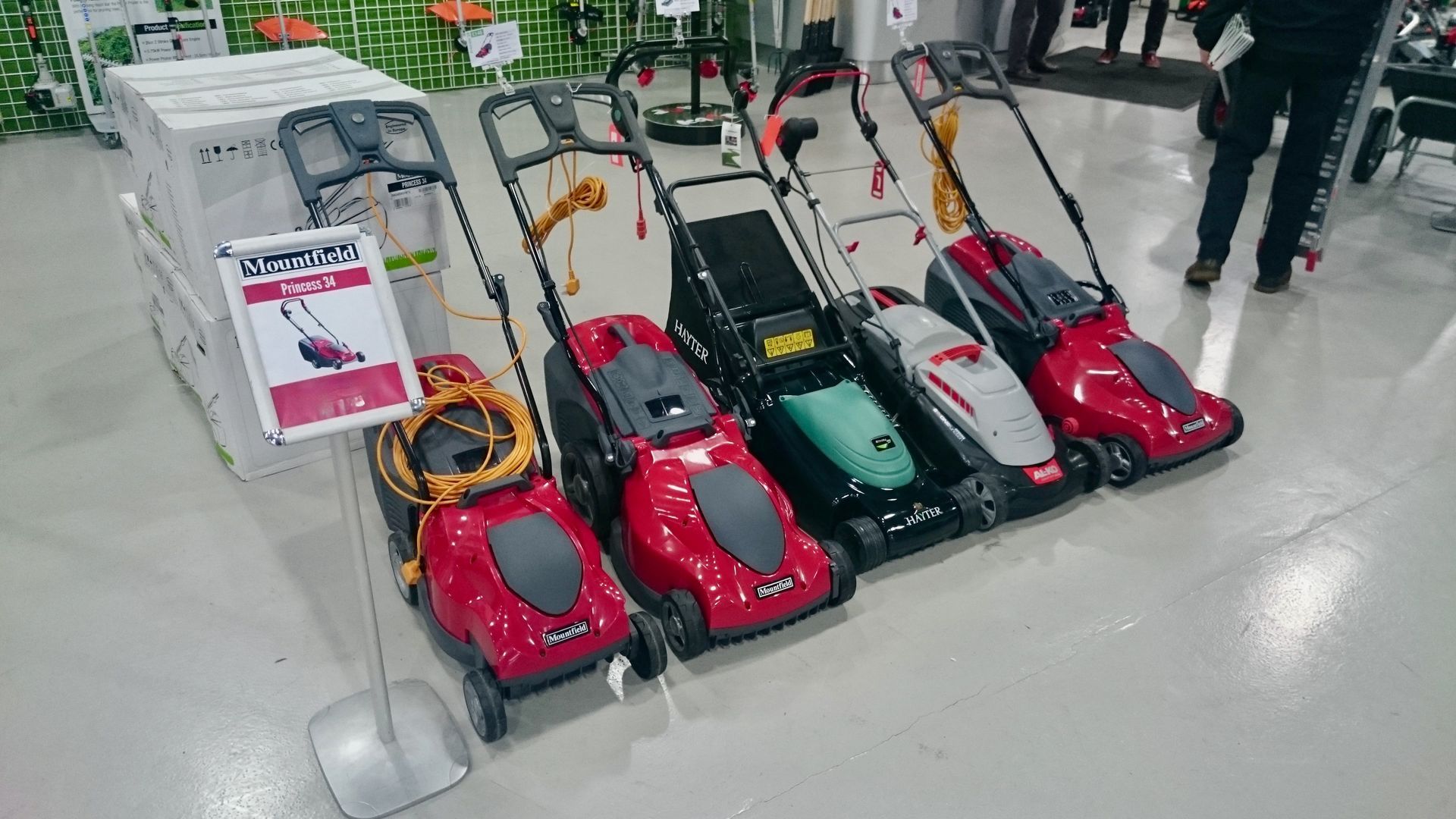
Many good quality, entry level machines, such as these models from Mountfield, Hayter and AL-KO feature plastic cutting decks. Image Credit: Author
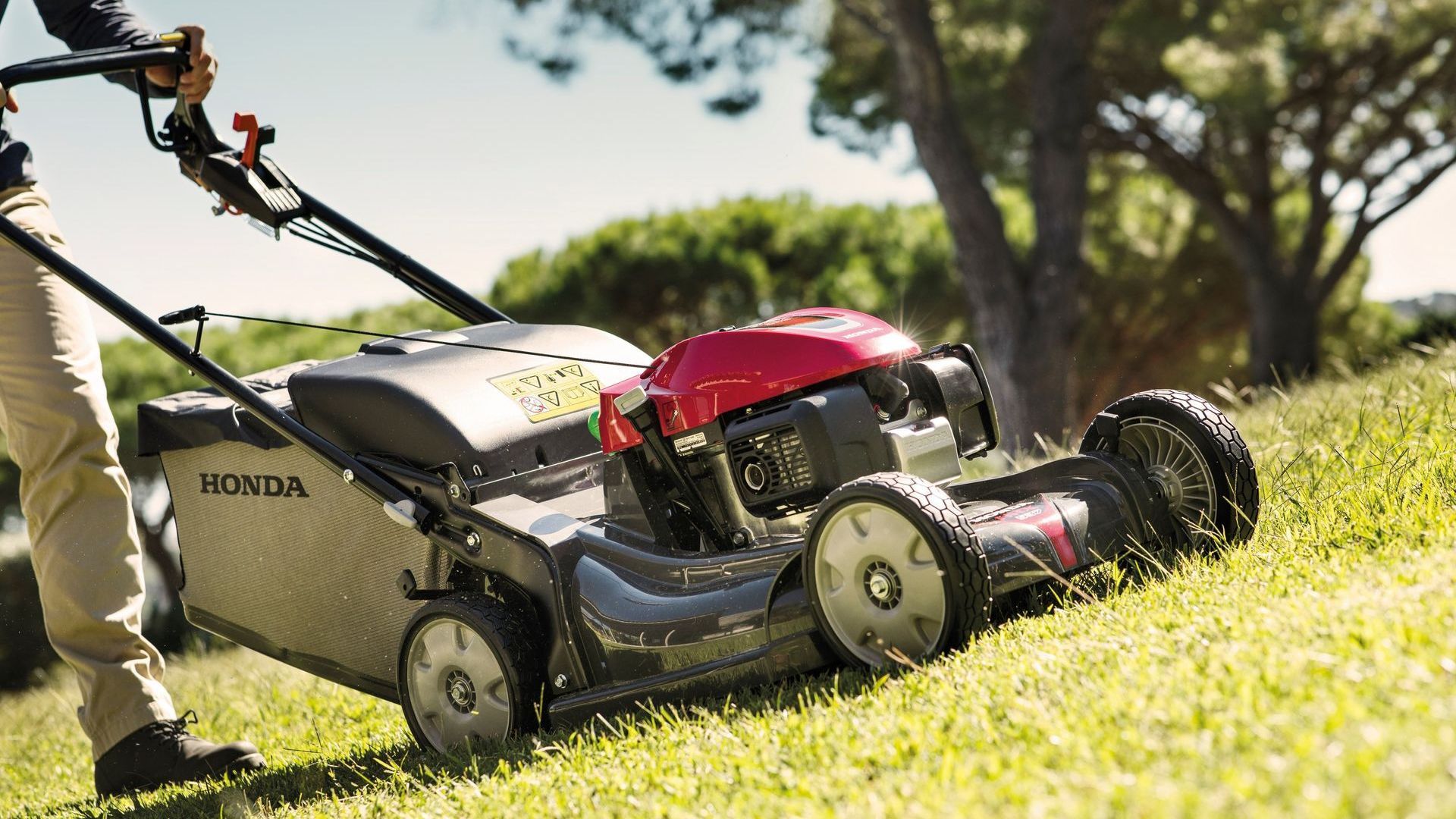
Honda pioneered the development of plastic cutting decks on premium grade machines, with the use of proprietary polymers such as Polystrong and Xenoy.
Image Credit:
Honda UK
Disadvantages of a Plastic Cutting Deck
Plastic does have some drawbacks:
- Lower structural strength compared to steel or cast aluminium: Despite excellent impact properties, plastics generally do not match the overall tensile strength and rigidity of steel, or cast aluminium;
- Potential flex and warping: Budget-level machines can sometimes use thinner or less rigid plastics, which can lead to the deck flexing during operation. Over time, exposure to UV light and repeated heat cycles may also cause the deck to warp or distort, impacting alignment and, ultimately cutting performance;
- Wide variation in quality: Not all plastic decks are created equal. Premium models, such as Honda’s HRX range, utilise advanced polymers like Polystrong and Xenoy — materials known for their exceptional durability, UV resistance, and structural stability. By contrast, lower-cost machines may use commodity thermoplastics, and lack the resilience that typifies the plastic decks found on higher end mowers.
Summary
For many domestic users, especially those with small to mid-sized lawns, choosing a mower with a plastic deck remains a smart, cost-effective solution. Lightweight construction, the resulting ease of manoeuvrability, and low maintenance requirements, makes plastic a go-to choice for everyday lawn care.
However, buyers should be wary of lower quality products. Investing in a well-designed model, from a
reputable manufacturer, with a high specification polymer deck will pay off in terms of longevity and quality of cut. While plastic may not offer the
raw strength of metal, a well-designed plastic cutting deck, will still contribute to the delivery of a powerful and robust performance on most domestic lawns.
Steel Decks
Steel decks are typically pressed from mild steel, using a production process similar to that employed in the manufacture of car body panels. This creates a lawnmower cutting deck characterised by structural consistency and high levels of rigidity. Once formed, the deck is treated with a protective coating and/or, a high-durability paint, to protect against chemical and environmental corrosion.
Just a few years ago, steel cutting decks were found almost exclusively on petrol powered mowers. However, as cordless battery technology has continued to evolve, today you’ll find steel decks fitted to an extensive range of battery electric machines too.
Advantages of a Steel Cutting Deck
As a material, steel has much to commend it:
- Excellent mechanical properties: Steel is characterised by high tensile and torsional strength. On the lawn this translates to greater resistance to flexing, and improved stability under load;
- Affordability: Compared to aluminium, composites, and premium-grade polymers, steel decks usually cost less to manufacture. So, you can expect a machine equipped with a steel deck, to cost less;
- Repairability and sustainability: Unlike some plastics and composites, steel cutting decks can be easily repaired. When a steel deck reaches the end of its operating life, it's also fully recyclable, making steel a sustainable choice;
- Choice: You can choose from a very large range of steel decked machines... from 12" models designed for the smallest domestic lawns, through to 30" dual blade machines, designed to tackle the very largest lawns.
Disadvantages of a Steel Cutting Deck
And the disadvantages?
- Corrosion: Even with modern powder coatings, chips, scrapes, and exposed surfaces can invite rust — especially when grass clippings or moisture accumulates on, or beneath, the surface of the deck;
- Chemical resistance: Steel decks will often prove less resistant to many household and garden chemicals, than plastic, composite and aluminium alternatives;
- Weight: Asteel cutting deck will usually weigh more than a plastic or polymer cutting deck. While this can enhance stability and traction, it can reduce manoeuvrability, particularly in tight spaces, or when mowing across uneven ground;
- Cost: Though generally more affordable than cast aluminium or advanced composites, steel decks usually cost more than plastic equivalents.
Managing Corrosion
The primary drawback of steel is its susceptibility to corrosion. However, modern anti-corrosion treatments — including powder coatings, and electrostatic paints — have significantly improved long-term durability. The author has worked with, and used machines equipped with steel decks for many years. In his experience, the risk of corrosion can be easily managed by:
- Clearing clippings and moisture from the deck immediately after use;
- Inspecting for chips or abrasions regularly, and touching up exposed areas promptly;
- Storing the mower in a dry environment when not in use.
Summary
Steel offers a compelling mix of strength, affordability, and longevity. On larger domestic mowers, a steel cutting deck is a practical and robust choice. Steel's high tensile strength, excellent impact resistance properties, and dimensional stability, makes it ideal for users who demand a consistent cutting performance across a range of grass conditions. While steel decks do require ongoing care to reduce the risk of corrosion, with a little common-sense and some basic housekeeping, a steel cutting deck, will provide many years of dependable, reliable service.
Composite Decks
Composite decks are at the cutting edge of lawnmower technology. They are engineered primarily from materials derived from aerospace and automotive applications. Composite decks are usually found on high-end professional-grade machines, although a small number of consumer and prosumer grade models are available. These decks are not simply a lighter alternative to metal — they offer exceptional strength-to-weight ratios, outstanding resistance to chemicals, inbuilt resistance to weathering, and excellent long-term dimensional stability.
Advantages of a Composite Cutting Deck
- Lightweight construction: Lighter than both steel and aluminium, composites reduce overall machine weight, to improve manoeuvrability, transportability, and reduce operator fatigue;
- Inbuilt resistance to corrosion: Just like plastic, composites will never rot, rust or corrode, and do not require painting, or protective coatings;
- Exceptional rigidity: Composite decks are engineered to deliver high levels of torsional stiffness, which helps deliver a uniform quality of cut — even when under high load, or when used on challenging and uneven terrain;
- Superior resistance to chemicals: Ideal for professionally maintained or chemically treated lawns, composite decks resist damage from most fertilisers, weed killers, and lawn tonics better than painted metal alternatives.
Disadvantages of a Composite Cutting Deck
- Cost: The biggest drawback of composite decks is their premium price point. Composite moulding is a complex process, which requires specialist materials, and exceptional quality control. So you can almost certainly expect a mower with a composite deck, to cost more than almost any other;
- Limited availability: Because of their cost, composite decks are generally reserved for professional or high-end consumer machines, limiting the range of models available.
Summary
Composite cutting decks offer an unmatched blend of strength, lightweight construction, chemical resistance and protection against corrosion. For landscape gardeners, horticultural professionals, and serious lawn care enthusiasts, they provide a compelling case for investment — especially for anyone tasked with maintaining multiple lawns. However, for the average homeowner maintaining a single lawn, the advantages a composite deck offers, can only occasionally justify the significant price premium.
Aluminium Decks
Once found almost exclusively on professional and high-end consumer-grade machines, aluminium cutting decks can today be found on a much wider range of mowers than ever before.
Benefits of an Aluminium Cutting Deck
Aluminium cutting decks strike a compelling balance between strength, weight reduction, and longevity, making them a popular choice for both high-end domestic and professional-grade mowers. Aluminium's standout feature is its natural resistance to corrosion, which makes it ideally suited to damp climates, regular use, and long-term ownership.
- Excellent resistance to corrosion: Aluminium is characterised by excellent corrosion resistance characteristics, outperforming most grades of steel in harsh, wet, and chemically demanding environments;
- Lightweight construction: Aluminium is significantly lighter than steel by volume. Though manufacturers often compensate for strength by using thicker castings, aluminium decks still tend to weigh less than their steel counterparts;
- More affordable than composites: When compared to composite decks, aluminium usually less costs less to manufacture, making it a mid-tier choice between premium composites, and entry-level steel / plastic cutting decks;
- Recyclability and Sustainability: Aluminium is 100% recyclable, making it a sustainable choice for users looking to reduce their environmental impact;
- Choice: There's a wide range of mowers to choose from, from consumer-grade machines, to feature packed, commercial-grade models.
Disadvantages of an Aluminium Cutting Deck
The key drawbacks of choosing an aluminium cutting deck are cost and repairability:
- Cost: While not as expensive as composite materials, aluminium decks typically cost more than plastic and steel equivalents;
- Repairability: In the event of anything other than minor damage, an aluminium deck will often prove more difficult and expensive to repair, than steel and plastic alternatives.
Summary
Aluminium cutting decks offer a
middle-ground solution for anyone seeking to combine
durability with reduced maintenance, without the expense of purchasing a composite deck machine. With their inbuilt resistance to rust, lightweight construction, and
structural integrity, aluminium cutting decks are a favourite with homeowners and contractors alike. While you can expect to pay a modest premium over steel and plastic alternatives, many users find the reduced risk of corrosion more than justifies the initial investment — especially for use in environments where moisture is a continual challenge.
Hybrid Decks
Hybrid cutting decks harness the best attributes of two or more materials — such as plastic, steel, or aluminium — in a single machine.
By combining different materials with complementary properties, they aim to
enhance performance, reduce weight, and improve longevity,
while eliminating the weaknesses associated with the use of a single material. Effectiveness is entirely dependent on which materials are used.
Summary
When choosing a new or replacement mower, lawnmower deck design and construction plays an important role in both machine performance and longevity. The ideal cutting deck material, is size, terrain and user dependent.
On small to medium-sized lawns, alongside steel, plastic cutting decks are a practical, versatile and popular choice. Plastic offers users the following benefits:
- Inbuilt resistance to corrosion, since plastic will never rot, rust, or corrode;
- Excellent impact resistance characteristics, ensure plastic cutting decks can take life’s little knocks and bumps in their stride;
- Lightweight construction for maximum manoeuvrability in tight areas and on uneven terrain;
- Low purchase cost, with a wide range of entry level models available;
- Extensive selection of models to choose from — including corded electric, battery electric and petrol machines — from a wide variety of manufacturers.
At larger lawns, or for more demanding domestic applications, steel — or a high-performance polymer — is usually preferred. Steel decks offer:
- Superior rigidity and torsional strength, helping to maintain cut consistency;
- Durability, especially when used on more challenging terrain.
If your budget allows, an upgrade to an aluminium brings with it significant benefits, when compared to steel:
- Natural resistance to corrosion;
- Inbuilt chemical resistance;
- Reduced overall weight;
- Longer operating life.
While machines with
composite cutting decks are, in the author’s experience, a pleasure to operate, they come at a price point that will be difficult to justify for most domestic users. However, for many professional contractors, the advantages of choosing a composite deck are compelling.

